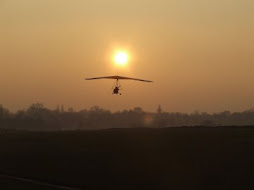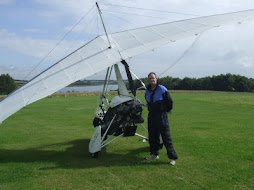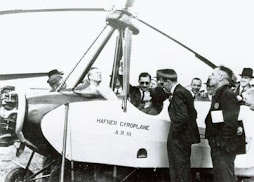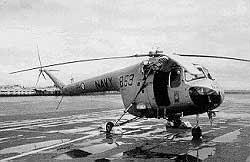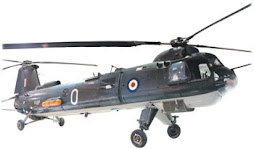The postman just knocked on the door and handed me a board-backed envelope, and told me he hadn't wanted to put it through the letterbox because it was marked "Do not bend", so I knew it was something important.
It was my Certificate of Registration of Aircraft, issued by the Civil Aviation Authority.
It is now official. I own an aeroplane!
You'd need to know me to understand what a big deal this is for me. It is second only to my first solo and up there with losing my virginity.
Thursday, 29 January 2009
Hang Glider speedo

At Sywell the other day I brought up the subject of making your own instruments and Stewart mentioned a simple ASI which hang glider pilots have used for years and which sounded elegantly simple. It is called a Hall Airspeed Indicator, and at $23 it costs about an eighth of a Digifly probe (which then needs to be connected to a vario costing another £164!) Put a different way, by getting one of these I can save myself about £230! (though the Digifly has several other desirable functions, like an altimeter - which is something I will still need to get)
Essentially the Hall ASI is a tube with a disc inside it which is raised up a graduated (colour coded) scale by air flowing in through the bottom. The disc is kept upright by a central spindle. Read the link to learn about the colour bands.
I love the fact that SSDR provides the creative pilot with the opportunity to experiment with technologies from other fields. I like the open-minded cross-over between paragliding, hang gliding, etc which is a particular strength of the team at Flylight, who have lots of experience of all aircraft types, from hang gliders and paragliders to Pitts Specials; electric motors, twin engines to jets; parachutes to two axis, flex wing and fixed. They are a versatile bunch.
Monday, 26 January 2009
flew again, finally!
More about this later. Right now I should be getting to bed, with school in the morning! But I managed to get 2Hrs 35mins of flying in the Dragonfly today, with two landings out at Pitsford, the second of which involved two go-arounds because I had come in too high (I really must get an altimeter and work out exactly the best height for Finals) . On the first I had a very nice chat with Fiona, the lady of the house, who said that I was welcome to camp next to the strip, anytime I liked! Wouldn't that be great? :)
Neill thinks the worst of the winter is behind us! I hope he is right. It was mild today and as far as I could tell, my new heated gloves worked fine. It would take a really cold day to test them properly, though.
It was good to finally meet Mark, who was to have been my instructor, but for the harvest - he is a farmer. He gave me some tips about landing with accuracy. Also, I met his daughter, who is doing the peachiest of work experience placements at Flylight. I wish I had been given that chance when I was at school!
I now want to dedicate any spare time to study, to getting the Nav and Met papers out of the way, so that I am then free to take the GST, as soon as three hours' flying revision are out of the way.
The big push is on.
:)
Neill thinks the worst of the winter is behind us! I hope he is right. It was mild today and as far as I could tell, my new heated gloves worked fine. It would take a really cold day to test them properly, though.
It was good to finally meet Mark, who was to have been my instructor, but for the harvest - he is a farmer. He gave me some tips about landing with accuracy. Also, I met his daughter, who is doing the peachiest of work experience placements at Flylight. I wish I had been given that chance when I was at school!
I now want to dedicate any spare time to study, to getting the Nav and Met papers out of the way, so that I am then free to take the GST, as soon as three hours' flying revision are out of the way.
The big push is on.
:)
Sunday, 25 January 2009
Make your own instruments



In the 1987 film, Flying for Fun, we saw Jack Parham making his own altimeter out of a thermos flask and in a book recently I spotted an airspeed indicator from the earliest days of flying, which was made from a spring and gauge, not unlike these 1930's refinements. I really fancy making primitive instruments for my Dragonfly.
I am going flying, fingers crossed!
Just heard from Neill. No flying today as Sywell is waterlogged, it's windy and rainy, but tomorrow there will be little wind and if it is too wet on the grass we may take off from the taxi-way.
I am going Dragonflying!
It has been 22 days!
I am going Dragonflying!
It has been 22 days!
Saturday, 24 January 2009
Yellow Aeroplanes

When I first told Flylight I wanted a Dragonfly, I said it had to be yellow. And G-AEFT is the reason why. I first fell in love with her - an Aeronca C3 - watching a short film, way back in 1987, called Flying for Fun, which was about the development of aerial gunnery by Jack Parham, who until then flew purely for fun. The film was really superb...and having recently got back in touch with a friend I lent it to, can't wait to watch it again. It portrayed the 1930s as the ideal time to fly: quiet skies, flying picnics, lazy hot summers and people experimenting with all sorts of new types.....less obsession with speed, than the philosophy Neill and I share, that it is about the joy of flight, rather than getting somewhere quickly.
Subsequently, in 1992, my belief that all aeroplanes should be yellow was reinforced by seeing a yellow Thruster on the grass below me as I flew a Pegasus Flash 2 over Belle Vue. It had been landed by Diddie Sims, who was being taught to fly by Ian Stokes at Davidstow, when I had just graduated and was working there for flying lessons. Diddie, now an experienced pilot, was then on one of her qualifying cross-country flights. Me? I only got in a few hours that summer.
I mention both the above because I have just found G-AEFT on G-INFO and written to her owner Nick Chittenden; and I found Diddie's name by accident in an old copy of MF, and got in touch with her at the Devon Strut of the PFA. I feel like circles are being completed. G-AEFT was the start of my love affair with small aeroplanes and Diddie was there when I first flew one.
(one day I will have a yellow aeroplane)
Friday, 23 January 2009
All the Way Home
Apart from a joy-ride with Neill when I was up at Sackville a few weeks ago, it is ages since I have been able to fly - because of the terrible weather. Neill was right about cramming as much flying into December as possible because bad weather was coming. I flew loads - something like eleven hours in my Dragonfly - and now I am desperate not to get rusty, though, encouragingly, the short flight in Neill's Quantum went well.
I really should be getting Met and Nav out of the way, but I have been idle. In fact, not having the intensity of the 6a.m. starts, the late evening two hour or three hour drives home or the nights in B&B and the hours of flying or ground school or even just watching and waiting at Sywell Aerodrome for the wind to drop, has left me feeling a little lost; unable to settle down and do anything else.

Last time I was at Sywell Paul Dewhurst lent me a Garmin Etrex, a handheld GPS system, generally used by walkers. I wouldn't be able to use anything like this in my cross-country qualifiers, but trying Paul's has convinced me that it would be great to have one with me afterwards. I want to be good at dead reckoning, so I'd never want to be dependent on GPS, but the Etrex has one function that is very useful. It points home! (or to any other location you have programmed into it.) You don't even have to know your grid reference to use it. You can just get it to read where it is when you set out, save that in its memory, then when you are out in the middle of nowhere, tell the Etrex you want to go there and it will point home.
I haven't tried anything more complex on it than that, and I am not sure I want to. I have taught it where I live and got it to take me home from school the other day and it did the job (though the arrow points as the crow flies and of course I had to go off track to get there...but that is no problem in the air. Just as well, because when I flew with Neill last time, I really lost my bearings; everything looks so different up there. It would have been great to have an arrow pointing home.
I really should be getting Met and Nav out of the way, but I have been idle. In fact, not having the intensity of the 6a.m. starts, the late evening two hour or three hour drives home or the nights in B&B and the hours of flying or ground school or even just watching and waiting at Sywell Aerodrome for the wind to drop, has left me feeling a little lost; unable to settle down and do anything else.

Last time I was at Sywell Paul Dewhurst lent me a Garmin Etrex, a handheld GPS system, generally used by walkers. I wouldn't be able to use anything like this in my cross-country qualifiers, but trying Paul's has convinced me that it would be great to have one with me afterwards. I want to be good at dead reckoning, so I'd never want to be dependent on GPS, but the Etrex has one function that is very useful. It points home! (or to any other location you have programmed into it.) You don't even have to know your grid reference to use it. You can just get it to read where it is when you set out, save that in its memory, then when you are out in the middle of nowhere, tell the Etrex you want to go there and it will point home.
I haven't tried anything more complex on it than that, and I am not sure I want to. I have taught it where I live and got it to take me home from school the other day and it did the job (though the arrow points as the crow flies and of course I had to go off track to get there...but that is no problem in the air. Just as well, because when I flew with Neill last time, I really lost my bearings; everything looks so different up there. It would have been great to have an arrow pointing home.
Monday, 5 January 2009
Dragonfly Sunset, by Neill Howarth

Neill Howarth (my instructor) sent me these absolutely superb photos of me flying my Dragonfly in a Sywell sunset. Click here for the slideshow.
Thanks Neill
Thanks Neill
Saturday, 3 January 2009
My first outlanding and the first aircraft into Pitsford this year!
 Engine failures in the Quantum went fine, so late morning I started kitting out for my first flight out of the circuit. I borrowed a radio and headphones from Stew, taped a jotting scrap to my map-board and bungeed a pen to it, to make RT calls easier (runways and QNH/QFE settings have to be relayed back to the tower, and RT itself can be a handful for the nervous novice, as it is), carried a stopwatch and put my phone in my mapboard. I borrowed Flylight's Vario (which shows two altimeters simultaneously) and all kitted out like someone off Top Gun, swaggered off to my fighter in slow motion.
Engine failures in the Quantum went fine, so late morning I started kitting out for my first flight out of the circuit. I borrowed a radio and headphones from Stew, taped a jotting scrap to my map-board and bungeed a pen to it, to make RT calls easier (runways and QNH/QFE settings have to be relayed back to the tower, and RT itself can be a handful for the nervous novice, as it is), carried a stopwatch and put my phone in my mapboard. I borrowed Flylight's Vario (which shows two altimeters simultaneously) and all kitted out like someone off Top Gun, swaggered off to my fighter in slow motion.I departed from 05 into a right hand circuit (all RT calls having gone smoothly) and departed the circuit from the base leg and headed for Pitsford reservoir, which I approached a little under 2000'. Previously with Neill, I had landed from the East, but with the wind direction in the opposite direction, I lost height over the water and seemed to just hang there in space, hovering almost! Eventually I had lost sufficient height to make an approach and dropped down smoothly onto the grass strip, with just a bit of a cross wind to contend with....and touched down.
I was elated.
This was my first ever solo out-landing. Granted, it is only 17 minutes from Sywell, but nonetheless, navigating and flying alone for the first time gives you hell of a buzz. I taxyed down to the windsock, parked up and went to sign in. The landowner waved from the house and approached with the landings log and introduced himself as Richard Stanley, a really nice chap whose family happily entertain microlights on their beautifully located and maintained grass strip, despite the fact that they are not pilots themselves. Generously, they charge no landing fees, but there is a voluntary collection tin for the Air Ambulance.
Richard said that I was the very first to land at Pitsford this year! We had a brief chat and then, after Richard had taken a shot for the blog, I texted Neill with news of my landing and then took off, pootled about a bit, then made my approach call back to Sywell and made my first solo over-head join.....and Cath's "nice landing" compliment didn't come with a qualifier :)
I flew again later in the afternoon after crewing for Stew, who took the Alatus out for a check flight and had trouble starting it. My last flight was brief as sunset was approaching. I found what Stew later called "controlled drift" quite tricky. I was being pushed sideways, which is an odd feeling, but eventually turned positively downwind and decided that would be my final circuit as it was getting hard to manage up there. I mentioned this to Neill, feeling a bit discouraged but he put it positively: "The thing is, you managed it".
Thursday, 1 January 2009
Leaving the nest
Another milestone.
This film is of Dragonflying at Pitsford.
Here is my account of my first landing at Pitsford, early in my training.
These two pictures are also of me in the Quantum,
taken by press photographer and fellow flexwing student pilot, Steven Prouse
taken by press photographer and fellow flexwing student pilot, Steven Prouse
Subscribe to:
Comments (Atom)













